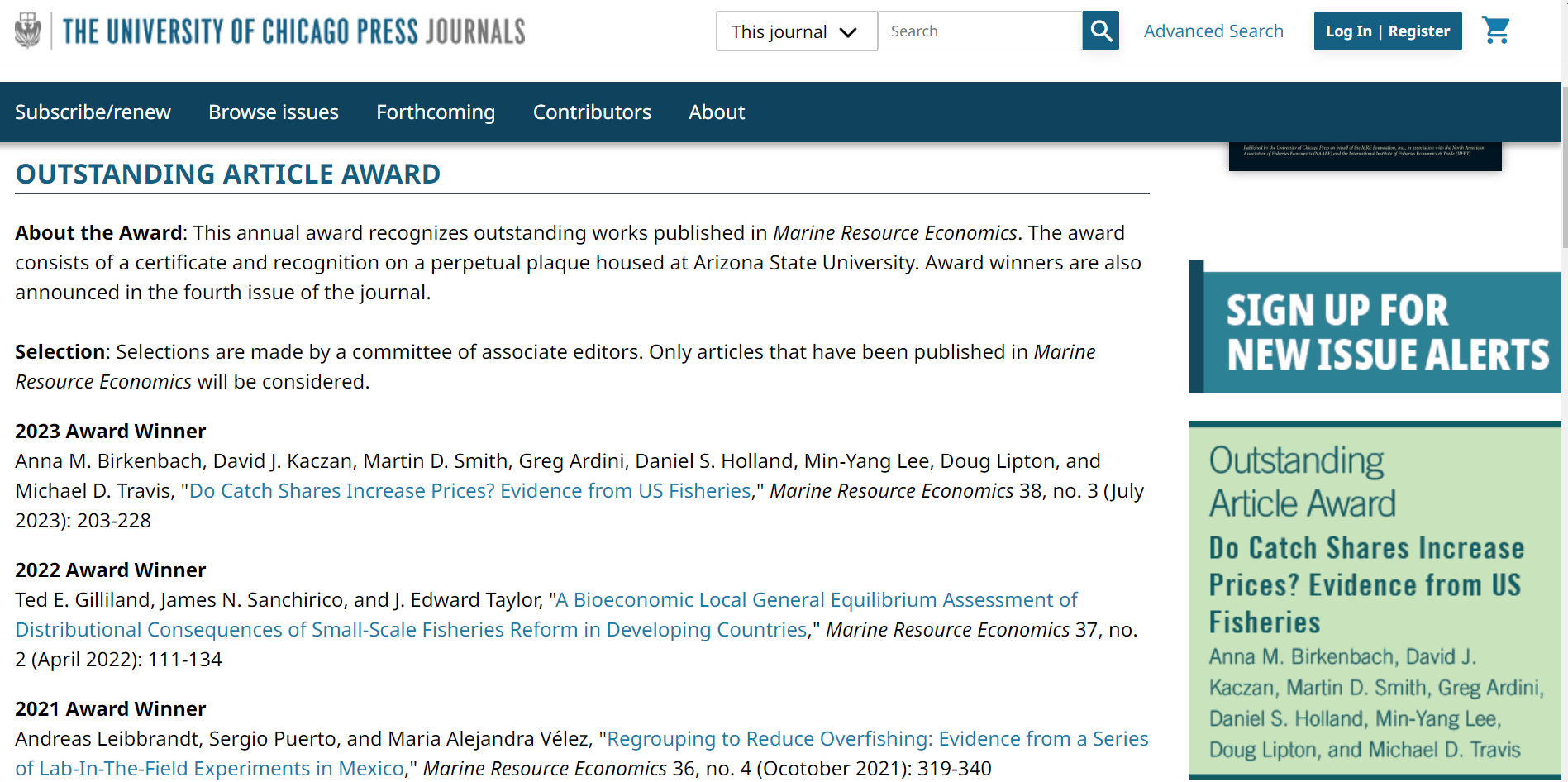
It began as a term paper for Professor Marty Smith’s Natural Resource Economics class. Duke PhD students Anna Birkenbach and David Kaczan set out to conduct a simple empirical test of a core theory underlying rights-based fisheries management: secure rights should eliminate the “race to fish” and yield longer seasons, fresher/higher-quality seafood, and higher prices for fishers. While anecdotal evidence existed (e.g., for Pacific halibut), there had been no systematic test for these outcomes across multiple fisheries.
Neither David nor Anna ate fish or had any idea how much one might cost. So, combining David’s superhuman focus with Anna’s ill-begotten programming skills, the pair hiked up the steep learning curve – and portions of Alaska – in search of answers.
But answers often lead to more questions (and a lot of bug bites), and the humble class project about five iconic species quickly grew to encompass all U.S. catch share fisheries and some in Canada as well. This better represented the range of effects across diverse fisheries, which the authors hoped would be of use to managers considering implementing catch shares in other settings. Anna and David won the International Institute for Fisheries Economics and Trade (IIFET)’s Best Student Paper award in 2016, following in Marty’s footsteps. Then, in a victory for David in his battle with Anna over British versus American spellings, the first article to come out of this work was published in Nature. Authors Anna, David, and Marty reported that catch shares end the race to fish (albeit with some regional differences and counterexamples) and lead to longer seasons. The far more complicated effects on fish prices were set aside for a separate paper.
Anna and David graduated, sharing the Dean’s Award for Outstanding Student Manuscript and starting to think this “winning” thing was not nearly as hard as the last few Duke basketball seasons had led them to believe. But difficulties lay ahead. The “price paper” underwent revision after revision; through Covid and Christmases, the authors rethought, refined, and reran analyses to elucidate their complex story. What had seemed earlier to be the paper’s scientific strengths – discussion of heterogeneous treatment effects across dozens of fisheries and a battery of robustness checks – were seen by reviewers as over-ambitiousness, and, after 3.5 years in revise-and-resubmit at a top field journal, the paper was rejected.
And what happened then? Well…in Whoville they say that the little price paper at last found its way. “Do catch shares increase prices? Evidence from U.S. fisheries” was published in Marine Resource Economics (MRE) last year and has just received the journal’s Outstanding Article Award:
“The theoretical advantages of catch shares, such as reducing overcapacity from the ‘race to fish’ and increasing harvest value, have long been acknowledged. Birkenbach et al. (2023) provides a nuanced perspective on how catch shares influence the value of seafood harvest, identifying conditions where catch shares may have little to no impact on seafood prices, or even negative effects, and demonstrating how price impacts can vary in multi-species fisheries. Their study explores these theoretical ideas by applying causal inference methods to data from 39 U.S. fisheries that adopted catch shares. The authors find mixed evidence of price effects, with positive impacts more likely in high-value fisheries (e.g., Pacific halibut and Atlantic sea scallop) and negative impacts observed in lower-value fisheries (e.g., white hake and Pacific yellowtail rockfish).”
The authors (Anna Birkenbach, David Kaczan, Marty Smith, Greg Ardini, Dan Holland, Min‐Yang Lee, Doug Lipton, and Mike Travis) are thrilled that this work found a home in MRE and are honored to receive this recognition, which they share with the many wonderful colleagues who provided feedback, data, and encouragement along the way. Special thanks to Lee Anderson, whose enormous heart is sorely missed.
